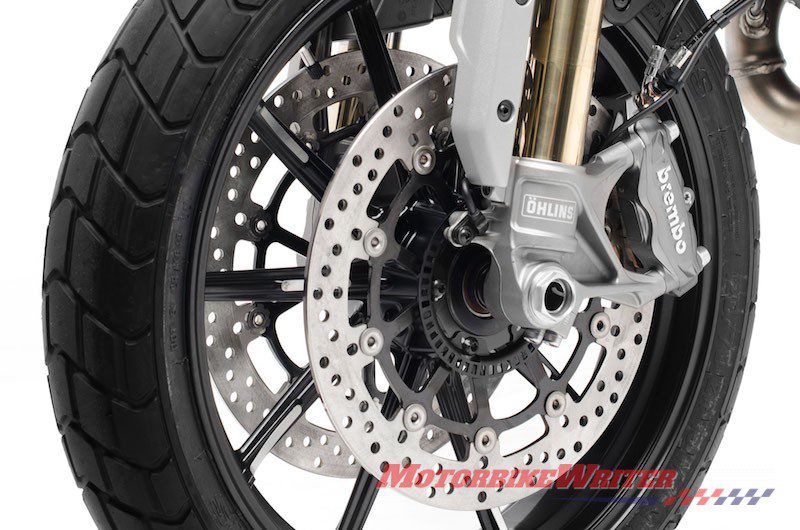“Comfort braking” is a disingenuous term given to the habit of holding the front brake on when stopped, such as at traffic lights.
And it could be ruining your front brake discs!
First, we have always recommend that when you stop, you should always put your left foot on the ground so your right foot is on the rear brake.
There is no need to use the front brake at all, once stopped. In fact, if you are rear-ended your hand will fly off the front brake, anyway.
Another problem with holding the front brake while stopped is that it can “hot spot” the front disc or discs, if you have two.
Brake pads heat up with use, especially in traffic. If the front brake is held on, the pads sit in the one spot on the brake disc and can cause it to slightly warp.
A warped disc will decrease braking effectiveness as the pad pressure to a warped disc will modulate instead of remaining even or progressive.
Warped discs seem to be more of a problem these days because of the way modern discs are manufactured.
It can either be an issue with the suppliers of the discs or a production issue caused by motorcycle manufacturers not taking the time to temper the disc steel. (That means the disc is not put through several heat cycles to make it harder.)
These “soft discs” can warp quite quickly and rider forums are littered with claims that discs on new bikes have warped within months of purchase.
So, next time you stop, put your left foot down, leave your right foot on the rear brake and let go of the front brake.
UPDATE: Several readers have asked about the rear disc and whether you are just transferring the problem from the front disc to the back.
However, rear discs rarely get as hot. Most of the braking effort and efficacy is in the front.
In fact, on most bikes (except cruisers), the rear wheel will lift under braking, so riders tend to release the rear brake to avoid locking the wheel.
That’s why front disc brakes are usually bigger or dual discs.
Cruisers may develop hot rear brakes because of the efficacy of rear braking. They should probably just leave all brakes along when stopped on a flat surface.


